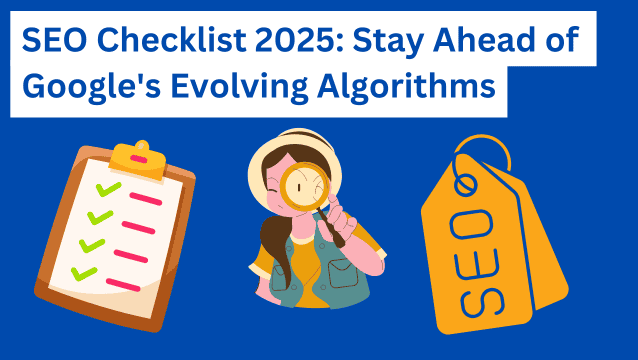YouTube has its very own search engine. Do your videos appear at the top of the results for relevant keywords?
If not, YouTube SEO may help boost your channel’s visibility.
SEO optimization for YouTube is all about helping the platform’s algorithms understand your content and showing that it can drive high levels of audience engagement.
In this guide, you’ll learn about implementing SEO to help your YouTube channel increase rankings in search results and attract more viewers.
What is YouTube SEO?
YouTube search engine optimization (SEO) is the process of optimizing your videos to increase their chances of showing up in search results on YouTube (and sometimes in Google search).
A YouTube video with all the right SEO elements is often more visible to users.
YouTube SEO strategies include keyword research, title and description optimization, and more.
Why you need YouTube SEO
YouTube SEO is a must-have in today’s digital world. According to research by a team from the University of Massachusetts at Amherst, there are around 14 billion videos on YouTube.
That’s more than one and a half videos for every person on the planet.
That means if you post videos without optimizing them for search, they will likely be lost in a pile of other videos on that topic.
But if you do implement YouTube SEO, you can boost the visibility of your videos and gain more subscribers, viewers, and even customers (if you’re selling a product).
What is YouTube’s search algorithm?
Like Google, YouTube wants to help its users find the most relevant content with the least amount of friction. This means it doesn’t want users to do multiple searches to find the type of content they’re looking for.
When viewers find what they need, YouTube doesn’t want them to exit the video after only a few minutes of watching. To boost customer retention, viewers need to watch videos for as long as possible.
So, what does this mean for YouTube’s algorithm?
This means the popular video platform will push the most engaging content to the top of the search results.
It determines this by looking at a variety of factors:
- What videos drive the most engagement (e.g., likes, shares, comments, watch time)
- How well the metadata match the viewer’s search (e.g., title, keywords, description)
So, how can you ensure that your videos appear in specific search results? You must provide YouTube with as much information as possible about your video. This is what YouTube SEO is all about.
YouTube SEO: How to optimize your YouTube videos
You might hear about YouTube SEO mainly in terms of elements like the video’s title, description, or keywords.
While we’ll review each of those, YouTube SEO is more than that. It all boils down to engagement.
How users engage with your video is a key component YouTube looks for when ranking videos in search.
Now, let’s discuss.
Do YouTube keyword research
It can be fun to create videos aimlessly because you enjoy the topic you’re covering so much or because you just want to explore your creativity.
There’s absolutely nothing wrong with that. But if you want to rank in YouTube search, your videos have to cater to your viewers and the type of content they want to consume.
So first, come up with a broad list of keywords. Think about different topics in your niche and industry. Then, write them down.
For example, if you’re in the dog niche, your keyword list might look like this:
- Dog adoption and rescue
- Dog health and wellness
- Dog product reviews
- Funny dog content
- Activities for dogs
- Dog grooming
- Dog training
- Dog breeds
- Puppy care
- Dog travel
- Dog food
These keywords are okay, but they’re pretty broad. However, they’re a good place to start because they allow you to identify high-level topics before refining your focus to target more specific, niche keywords.
That leads me to the next point. Type one of those keywords in YouTube’s search bar. This is where you utilize YouTube’s Search Suggest feature. It will help identify terms that people are already searching on YouTube.
Let’s say you want to focus on “dog training” as a keyword. Just put it into the search bar, and you’ll see lots of keywords related to that topic.
You can get pretty specific. “Dog training aggressive behavior,” “dog training videos for puppies,” and “dog training collar beep noise” are just a few examples of how you can narrow down your keywords to boost your chances of ranking in the search results.
You can get even more granular with it by looking at the most popular videos in the search results and determining which keywords they use to rank in the search.
To do this, look at the video’s title, description, and tags.
Other ways to perform YouTube keyword research:
- Check out your YouTube “Traffic Source: YouTube search” report. If you have an established channel, you can use this report to see keywords your ideal viewer has searched for to discover your videos.
- Plug keywords into Google to scope out the competition. If a lot of other content creators have used a search query, that means there is high competition, so it will be much harder to rank for that particular search term. So, look for low-competition keywords. These keywords will have fewer search results than the ones with higher competition.
- Look at keywords for YouTube videos that are already ranking in Google. You read that right. YouTube isn’t the only place your video can get search rankings. Your videos can also appear in Google search. You just have to identify the types of videos in your niche that tend to rank in the search engine results pages (SERPs). Search for a general keyword for your industry on Google. Then, if it turns up results for videos, click on those videos and try to analyze the factors that could be helping them rank. Do they use how-to keywords? Are they reviews or tutorials? Are they fitness (e.g., workout tutorials) or sports-related? Are they funny videos? These are the types of videos that tend to rank on Google. If you can get your videos to rank both on Google and YouTube, you can get double the traffic.
YouTube videos that show you how to do something, like “How to Tie a Tie,” tend to rank in the SERPs.
Screenshot provided by author
Now that you’ve created a list of keywords to target on YouTube, it’s time to use a keyword research tool to determine search volume.
Your target keywords should have at least 100 monthly searches for the best results. That indicates the keyword or topic you’re targeting generates plenty of interest in your niche.
Create videos that keep viewers engaged
Remember when I said many ranking factors help determine where your videos end up in search?
Engagement is one of them.
An important term to consider here is “Audience Retention,” which is the average percentage of a YouTube video that people watch.
YouTube’s ultimate goal is to keep people on the platform as long as possible. If your video helps make that happen, it increases the chances of your videos showing up in search results.
So, you must keep your target audience engaged with your video. Yes, this is easier said than done, but the key is to have a payoff at the end.
Think of a superhero movie. The hero deals with challenges, learns skills, and ultimately defeats a villain in a big fight. This is the huge payoff viewers stick around for.
That’s what you want your YouTube videos to do as well.
Here are some examples of payoffs your YouTube video can offer to keep people watching:
- A unique insight, a surprising fact, or a new perspective on the topic that viewers didn’t anticipate
- Inspiring message, success story, or words of encouragement
- Actionable tips, a checklist, or a step-by-step guide
- Cliff-hanger or open-ended question
- Call-to-action with clear next steps
- Personal story or anecdote
- Solutions to a problem
A video about why credit cards are scams is a great example of a payoff that will make people click and stay engaged with the video until the end because they want to know the answer.
Screenshot provided by author
Creating highly engaging videos can help you get more clicks, increase your subscriber count, and attract comments and likes. And each of these factors can boost your YouTube SEO, too.
Optimize your YouTube videos for search
This is the part where you optimize, optimize, optimize.
That means you’re providing YouTube with as much information about your videos as possible. This helps with your video SEO.
So, make sure you’re including your target keywords in all the important places like your:
- Video titles, tags, and descriptions: Use the target keyword as close to the beginning of your video title, description, and tag as possible. When writing video descriptions and adding tags, combine long tail keywords, synonyms, or related terms. As for titles, be strategic. While you want to use a keyword, you also want to grab viewers’ attention and make users want to click. An example of a descriptive title is “How to Save $1,000 Fast: Easy Money Hacks That Actually Work!” It addresses a specific need, uses keyword-rich phrasing (“how to save,” “money hacks”), uses actionable language, and emphasizes speed and ease.
- Video file names: Don’t use a generic file name when uploading your video. Instead, use keywords at the beginning of the file name.
- Channel description: Use keywords in your channel description to attract more viewers. More viewers = more engagement, which in turn means better YouTube SEO.
- Hashtags: Hashtags allow viewers to find related content. It’s best to use three relevant hashtags since YouTube will hide your hashtags if you use more than that. Use keywords in your hashtags.
- YouTube tags: Even though they don’t show up, video tags help YouTube categorize your video. List your tags in the order of importance. Don’t add excessive or irrelevant tags. Adding tags that aren’t relevant to the video just to climb up the SERPs is against YouTube’s policies on spam, deceptive practices, and scams.
- Subtitles or closed captions: YouTube uses auto-captioning, which is fairly accurate. So, since YouTube automatically transcribes videos, it’s a good idea to say your keywords so that YouTube understands your content is about that term.
Optimize automatic chapters for SEO
Sometimes, YouTube uses machine learning to generate and label key moments, called automatic chapters, within a video.
Video chapters work like book chapters. They divide your videos into different parts to boost the user experience. They make it easy for viewers to find exactly what they’re looking for more quickly and in as few steps as possible.
These auto chapters are a source of metadata for ranking search results. You can label these chapters with relevant keywords. Use phrases that viewers might search for, such as
How to Start,” Top 5 Tips,” or “FAQ.” These can help your chapters rank higher in search.
Say keywords verbally in your video when introducing each chapter. YouTube’s AI recognizes spoken words and can use them to generate auto chapters.
Add a CTA chapter at the end of your video to boost engagement and improve SEO by showing YouTube the video’s structure and intent. This could be “Subscriber for More Tips” or “Visit Our Website”.
Note: Not all videos are eligible for automatic chapters. The eligibility requirements still aren’t clear. So, make sure you add your own timestamps to your videos, regardless of whether you have auto chapters.
Leverage YouTube analytics
With YouTube video optimization strategies under your belt, you can now look at your analytics to see how your efforts are working or if they’re working at all.
Check YouTube Studio.
Pay attention to click-through rate (CTR) and average view time.
Is your CTR low? Go back and check your thumbnail image and title. Not getting much watch time? Your video content might not hold your viewers’ attention for some reason. Maybe it’s too long. Or, maybe your video takes too long to get to the point.
You can also look at your SEO performance to see how users find your content and what search terms they use.
From there, you’ll know what keywords to use to center your future content.
Reach the top of video search results with the right YouTube SEO strategy
After reading this guide, I hope you can take away some actionable strategies to boost your SEO on YouTube.
Targeting the right keywords and optimizing your metadata to help give YouTube context about your content are important first steps.
But don’t stop there.
Even if you rank in the SERPs, you might not keep your top position for long if your content doesn’t engage your target audience.
That’s why it’s so important to keep an eye on your analytics to make sure you’re constantly delivering content that your viewers want to watch.
Need help with YouTube SEO strategy? Book an intro call with uSERP for everything you need to boost your rankings online.


